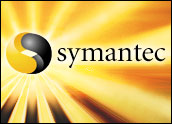
While Sony (Blu-ray) and Toshiba (HD-DVD) go head-to-head with competing high-definition DVD technology, Hitachi-Maxell and InPhase Technologies are working on a disc that will hold 300GB of information, or six times what either of the other discs can store.
Hitachi is calling their technology a tapestry holographic disc, but the technology is generally called a holographic versatile disc (HVD), which is slightly larger than a regular DVD. It is expected out by the end of next year and Hitachi estimates that by 2010 the discs will store 1.6 terabytes of data. Consumers could record up to 26 hours of HD content on a 300GB disc.
Split Laser Beams
HVDs work by using a laser light beam that is split into a signal beam and a reference beam. They come together to create a storage hologram. Several different holograms can be recorded into the same space by varying the angle, wavelength and media position of the reference beam. The technology also clocks much higher transfer rates than other DVD storage media.
“This technology holds promise as a future storage medium, but it’s unlikely to supersede HD-DVD or Blu-ray,” Nicole D’Onofrio, mobile computing analyst, Current Analysis, told TechNewsWorld. “Consumer awareness of HD-DVD and Blu-ray is further along than for holographic discs.”
But D’Onofrio said that in this emerging market, there are still many questions.
“At this point it’s a bit of an unknown how soon HD-DVD and Blu-ray will take off because of the format battle. What will end up really determining success of the HVD format are the price points at which the hardware will be available.”
Much Unresolved
The discs themselves are likely to cost less per gigabyte of storage, but hardware costs and compatibility issues remain to be resolved.
Michelle Abraham, principal analyst, In-Stat, said HVD has a big hurdle to overcome before it could be a viable consumer storage medium.
“Unless there is a standard for holographic storage, I don’t believe it will move beyond the enterprise market,” she told TechNewsWorld. “In order for it to supersede the blue laser technologies like HD-DVD and Blu-ray a common format or standard needs to be determined so consumers can be assured that any disc they buy can be played and recorded on in any holographic player or recorder.”
The Holographic Versatile Disk Alliance was created to do just that, but Hitachi is not a member of the alliance. Optware, based in Japan, is also working on a HVD system.






















































Maxell misses the mark, and then some.
.
.
http://www.nanotech-now.com/news.cgi?story_id=12682